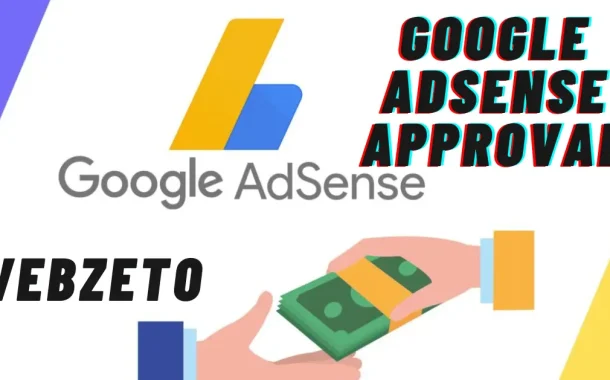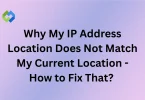Without approval, you can’t display AdSense ads on your website or channel, limiting your ability to generate income. Getting approved means Google trusts your content and your ability to adhere to their guidelines, which can lead to increased visibility and credibility. AdSense approval validates your efforts and enables you to turn your passion or hobby into a source of income.
Table of Contents
Google AdSense Requirements
Google AdSense has certain requirements that you need to meet to be eligible for participation in their program.
1. Content Guidelines
Google AdSense has strict content policies to ensure ads are displayed alongside appropriate content. Your website or content must not contain adult material, illegal activities, or copyrighted content without proper authorization.
It is important to create original, high-quality content that provides value to your audience. Avoid deceptive practices such as click fraud or artificially inflating ad clicks. Adherence to these guidelines is crucial for maintaining your AdSense account and ensuring long-term success.
2. Traffic
While there’s no specific minimum traffic requirement, having a steady flow of organic traffic can increase your chances of AdSense approval. Focus on creating engaging content that attracts visitors naturally through search engines, social media, or other channels.
Quality over quantity is key; aim for targeted traffic genuinely interested in your content and likely to engage with ads. Building a loyal audience over time can lead to sustainable ad revenue growth. Consider implementing SEO strategies to improve your website’s visibility and attract more visitors.
3. Website or Channel Ownership
To participate in the AdSense program, you must own the website or have permission to modify its content. Ensure that your website is fully functional and not under construction at the time of application. If you’re using a platform like YouTube, ensure you have administrative control over the channel where you plan to display ads.
Providing accurate and up-to-date information about your website or channel ownership is essential during the application process. Google verifies ownership to prevent unauthorized use of AdSense and maintain the program’s integrity.
4. Age Requirement
To participate in the AdSense program, you must be at least 18 years old. This age requirement ensures that participants are legally capable of entering into contracts. If you’re under 18, you may need a parent or guardian to apply on your behalf or wait until you meet the age requirement.
AdSense offers opportunities for individuals and businesses to monetize their online content. When participating in the program, it’s important to comply with all legal requirements and guidelines.
5. Ad Placement
Google AdSense has specific policies regarding the placement of ads on your website or channel. Ads should be distinguishable from content and not placed in a way that misleads or confuses users. Avoid placing ads near prohibited content such as adult material or violence.
AdSense also prohibits certain ad implementations, such as pop-ups, floating ads, or autoplay videos with sound. Following these ad placement policies helps create a positive user experience and ensures compliance with AdSense guidelines.
Alternative Content Creation Methods
Alternative content creation methods offer detailed ways to produce engaging material beyond traditional blogging.
- Video Content: Create videos on platforms like YouTube or Vimeo. Explore various formats such as tutorials, reviews, vlogs, or animations. Utilize editing software and basic filming equipment to enhance production quality. Engage with your audience through comments and community features. Monetize videos through ad revenue, sponsorships, or product placements.
- Podcasting: Start a podcast on topics relevant to your audience. Invest in a good microphone and recording equipment for better sound quality. Plan engaging and informative episodes with clear structure and pacing. Distribute podcasts on platforms like Spotify, Apple Podcasts, or Google Podcasts. Monetize through sponsorships, affiliate marketing, or listener support.
- Niche Websites: Build a website focused on a specific niche or industry. Create valuable content such as guides, tutorials, or product reviews. Optimize your website for search engines to attract targeted traffic. Incorporate multimedia elements like images, infographics, or interactive tools. Monetize through display ads, affiliate marketing, or selling digital products.
- Social Media Content: Leverage platforms like Instagram, TikTok, or Facebook to create visual content. Experiment with different content formats such as images, videos, stories, or live streams. Engage with your audience by responding to comments and messages. Collaborate with influencers or brands to reach a larger audience. Monetize through sponsored posts, affiliate marketing, or selling merchandise.
- Online Courses or Ebooks: Share your expertise by creating online courses or ebooks. Identify topics that align with your knowledge and audience interests. Provide valuable insights, practical tips, and actionable advice. Use platforms like Udemy, Teachable, or Amazon Kindle Direct Publishing to publish your content. Monetize through course or ebook sales, affiliate marketing, or offering premium content.
Optimizing Your Content for AdSense Approval
By optimizing your content according to these strategies, you can increase your chances of AdSense approval and create a positive experience for both users and advertisers.
Original and High-Quality Content
Produce content that offers unique insights, perspectives, or information not readily available elsewhere. Avoid copying or plagiarizing content from other sources; originality is key. Invest time and effort into research to ensure accuracy and credibility.
Pay attention to writing quality, ensuring clear and concise language with proper grammar and spelling. Provide value to your audience through informative articles, engaging stories, or entertaining videos.
Relevance and Consistency
Keep your content focused on topics that resonate with your target audience and align with your website or channel’s theme. Consistently deliver content that meets audience expectations and interests.
Develop a content calendar or schedule to maintain regular posting frequency. Use categories or tags to organize content and make it easy for users to navigate. Monitor trends and feedback to adapt your content strategy and stay relevant.
User Engagement
Encourage interaction with your content by inviting comments, questions, and feedback from your audience. Respond promptly and thoughtfully to user comments and inquiries to foster engagement and build community.
Encourage social sharing of your content to increase exposure and reach. Use calls-to-action strategically to prompt users to engage further with your content or subscribe to your channel. Analyze user engagement metrics such as bounce rate, time on page, and social shares to assess content performance.
Ad-Friendly Design
Design your website or channel layout with ad placement in mind, ensuring that ads integrate seamlessly with your content. Choose ad formats and placements that are visually appealing and complement your content without being intrusive.
Avoid excessive ad clutter or distractions that could detract from the user experience. Optimize ad sizes, colors, and styles to attract attention without overwhelming users. Test different ad placements and formats to find the most effective configurations for maximizing revenue.
Mobile Responsiveness
Optimize your website or channel for mobile devices to ensure a seamless user experience across all screen sizes. Use responsive design techniques to adapt content layout and formatting for mobile viewing. Prioritize loading speed and performance on mobile devices to reduce bounce rates and improve user satisfaction.
Test your website or channel on various mobile devices and browsers to identify and fix any issues. Monitor mobile traffic and engagement metrics to assess the effectiveness of your mobile optimization efforts.
Enhancing Your Website or Channel
Enhancing your website or channel involves various strategies to improve its functionality, usability, and appeal to visitors.
User-Friendly Design
Design your website or channel layout to be intuitive and easy to navigate. Use clear navigation menus and site structure to help users find their desired content. Optimize page load times to minimize wait times and improve user experience. Ensure consistency in design elements such as colors, fonts, and branding across all pages.
Compelling Visuals
Use high-quality images, graphics, and videos to enhance the visual appeal of your website or channel. Choose relevant visuals for your content and resonate with your target audience. Optimize images and videos for fast loading without sacrificing quality. Incorporate visual elements strategically to break up text and engage users.
Interactive Features
Incorporate interactive elements such as polls, quizzes, or surveys to engage users and encourage participation. Add social sharing buttons to make it easy for users to share your content with their networks. Include commenting systems to facilitate discussions and feedback from your audience. Implement features like live chat or contact forms to provide direct communication channels for users.
Search Engine Optimization
Optimize your website or channel for search engines to improve visibility and attract organic traffic. Conduct keyword research to identify relevant terms and phrases for your content. Use keywords strategically in titles, headings, and throughout your content. Optimize meta tags, descriptions, and image alt text to improve search engine rankings. Build backlinks from reputable websites to increase your site’s authority and credibility.
Accessibility
Ensure that your website or channel is accessible to users with disabilities by following accessibility guidelines. Use descriptive alt text for images and provide transcripts for audio and video content. Ensure that the text is readable and contrasts well with background colors. Provide keyboard navigation options and avoid relying solely on mouse interactions. Test your website or channel with accessibility tools and make necessary adjustments to improve accessibility.
Mobile Optimization
Optimize your website or channel for mobile devices to accommodate users accessing your content on smartphones and tablets. Use responsive design techniques to adapt content layout and formatting for different screen sizes. Prioritize mobile-friendly features such as touch-friendly buttons and easy navigation. Test your website or channel on various mobile devices and browsers to ensure compatibility. Monitor mobile traffic and engagement metrics to identify areas for improvement and optimization.
Monetization Strategies Before AdSense Approval
Before getting AdSense approval, you can explore various monetization strategies to generate income from your website or channel.
1. Affiliate Marketing
Partner with companies and promote their products or services on your platform. Use unique affiliate links to track sales and earn a commission for each referral. Choose affiliate programs that align with your niche and audience interests. Create compelling content that highlights the benefits of the products or services you’re promoting. Disclose your affiliate relationships transparently to maintain trust with your audience.
2. Sponsored Content
Collaborate with brands or businesses to create sponsored posts, videos, or reviews. Negotiate compensation terms such as flat fees, product samples, or affiliate commissions. Ensure that sponsored content is marked as such to comply with advertising regulations. Select relevant sponsorships to your audience and fit seamlessly with your content. Maintain authenticity and transparency in sponsored content to preserve your credibility.
3. Selling Digital Products
Create and sell digital products related to your niche, such as ebooks, courses, or templates. Develop valuable content that solves a problem or meets your audience’s needs. Set up an e-commerce platform on your website to sell digital products directly to customers. Offer exclusive bonuses or discounts to incentivize purchases. Promote your digital products through email marketing, social media, and other channels.
4. Donations or Membership
Invite your audience to support your content creation efforts through donations or membership subscriptions. Set up donation buttons or membership tiers with different benefits or perks. Offer exclusive content, access to community forums, or live Q&A sessions as incentives for donors or members. Cultivate a sense of community and belonging among your supporters. Express gratitude and appreciation for the support you receive from your audience.
5. Sponsored Events or Workshops
Host sponsored events, workshops, or webinars related to your niche. Partner with brands or industry experts to co-host or sponsor the event. Charge admission fees or secure sponsorships to cover event costs and generate revenue. Provide valuable content and networking opportunities for attendees. Promote the event through your website, social media, and email marketing to attract participants.
Applying for Google AdSense
Applying for Google AdSense is straightforward, but it requires attention to detail to ensure a smooth approval.
- Meet Eligibility Requirements: Ensure your website or channel complies with AdSense program policies and eligibility criteria. Your content must adhere to Google’s policies, including no adult content, illegal activity, or copyrighted material. Your website or channel should have original and high-quality content that provides value to users.
- Sign Up for AdSense: Visit the Google AdSense website and sign in with your Google account, or create a new account if you already have one. Enter your website URL or select your YouTube channel to begin applying.
- Provide Necessary Information: Fill out the AdSense application form with accurate and up-to-date information about yourself and your website or channel. Provide details such as your name, address, phone number, website URL, and content language.
- Verify Ownership: Verify ownership of your website or channel by adding the AdSense verification code to your site’s HTML code or linking your YouTube channel to your AdSense account. Follow the instructions provided by Google to complete the verification process successfully.
- Wait for Review: After submitting your application, wait for Google to review your website or channel and determine if it meets AdSense program policies. The review process may take a few days to several weeks, depending on the volume of applications and the complexity of your site or channel.
- Receive Approval or Feedback: If your application is approved, you’ll receive an email notification from Google welcoming you to the AdSense program. Follow the instructions in the email to set up your AdSense account and start displaying ads on your website or channel. If your application is not approved, you’ll receive feedback from Google outlining the reasons for rejection. Address any issues highlighted in the feedback and make necessary improvements before reapplying for AdSense.
- Monitor Performance: Once approved, monitor your AdSense account regularly to track ad performance, earnings, and compliance with program policies. Stay updated on AdSense guidelines and best practices to optimize your ad revenue and ensure long-term success in the program.
Waiting Period and Approval Process
After you apply for Google AdSense, you’ll get an email saying they received your application. They’ll then check your website or channel to ensure it follows their rules. This can take a bit of time, so be patient. Sometimes, they need to check things manually, especially if your site is complicated.
You may have to wait a few days or weeks to hear back from them. If your site meets their rules, they’ll email you that you’re approved. Then, you can start putting ads on your site and making money! But if they don’t approve you, they’ll tell you why. You may need more content or have a problem with your site layout. You can fix these things and try again.
If you don’t get approved the first time, don’t worry. You can make changes to your site and apply again later. Just keep working on your content and following the rules. Eventually, you’ll get approved, and then you can start earning money with AdSense.
Troubleshooting Rejections
If your Google AdSense application gets rejected, don’t worry; you can fix it.
- Google will tell you why they didn’t approve your application. Read their feedback carefully to understand what went wrong.
- Whatever the problem is, try to fix it. If they say you need more content, write more articles or make more videos. If it’s about the layout or design, work on that.
- Make your website or channel better. Check for broken links, slow loading times, or confusing navigation. Fix any issues you find.
- Once you’ve made improvements, you can apply for AdSense again. Just follow the same steps as before and submit your application.
- It might take some time for Google to review your site again. Be patient and wait for their response.
- Keep going. If you get approved the second time, keep going. Keep working on your site and making it better. Eventually, you’ll get approved.
FAQs
Q. Can I still get AdSense approval if I don’t have a website?
Yes, you can get AdSense approval with platforms like YouTube or social media pages. Just ensure your content meets AdSense policies.
Q. How long does it usually take to get AdSense approval?
The timeframe varies; it could take a few days or weeks. Be patient and focus on improving your content in the meantime.
Q. Do I need a certain amount of traffic to get approved?
While traffic is important, there’s no specific requirement. Focus on quality content and engagement rather than just traffic numbers.
Q. What should I do if my AdSense application gets rejected multiple times?
Take the feedback seriously and make necessary improvements. Consider seeking advice from forums or consulting with experienced AdSense users.
Q. Can I use other ad networks alongside AdSense?
Yes, You can use other ad networks alongside AdSense if their policies allow it. Just ensure ads from different networks don’t negatively impact user experience.
Conclusion
Getting approved for Google AdSense without writing blog posts is achievable through various content creation methods like videos, podcasts, and niche websites. By sticking to the guidelines provided, such as producing original and engaging content and adhering to AdSense policies, your chances of approval increase.
Although the approval process may take time and persistence, the potential benefits of earning revenue through AdSense make it worthwhile. Stay focused on providing value to your audience and continuously improving your platform. Even if you initially face rejection, learn from the feedback, make necessary adjustments, and strive for approval.














